4 Ways to Elevate Your Lead Generation Strategy
Guest post by Tony Chopp, Founder of Claim Your Space
Generating consistent, qualified leads can be a challenge for many businesses, especially if you experience seasonal slumps or find yourself in a space crowded with competitors. To build the best possible lead generation campaigns, you need smart assumptions in the planning stages, solid data for reporting and ongoing optimization, and clear processes for keeping things moving smoothly. As the founder of a digital agency specializing in lead generation and customer acquisition campaigns, I wanted to share the four key strategies we rely on for success.
1. Model Your Lead Funnel
If you’re starting to think about how you can generate more leads for your business, an excellent place to kick off is to model a potential sales funnel because it forces you to ask the questions that are going to truly drive results for your team.
Here are some basic starting questions:
- What should you expect for cost-per-click? (Tip: You can use a tool like Keywords Everywhere to estimate.)
- Do you know what a customer is worth?
- Do you know a conversion rate to sale?
- Do you have enough budget for +300 clicks / month (10 clicks per day)?
You can blend all this data together in a simple table that looks something like this:
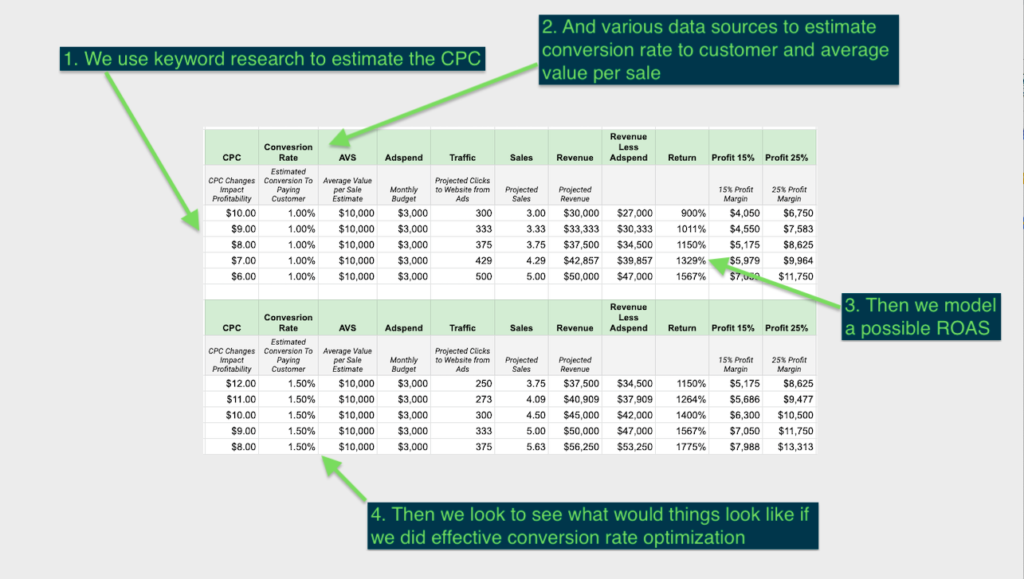
An outline like this helps you hone in on the boundaries for success in your project. And help set expectations internally and with agency partners, and establish clear KPI targets.
For example, if you sell something worth $1,357, and you convert at 10/10 (10% of your web traffic turns into a lead, 10% of your leads turn into sales)—then you can never afford PPC traffic that costs $32 / click.
“If you sell something worth $1,357, and you convert at 10/10 (10% of your web traffic turns into a lead, 10% of your leads turn into sales)—then you can never afford PPC traffic that costs $32 / click.”
At $16 / click you’ll be less than breakeven.
What you’re really looking for are clicks that cost about $3-4 / click for a nice 4:1 ROI.
2. Improve Your Conversion Tracking
This is a big one. This is where we spend most of our time with new paid advertising projects. With eCommerce projects there is an online sale, and a super clear path between an advertising investment and revenue, giving way to nice clean ROAS (“return on ad spend”) measurements.
With lead generation projects, things tend to be a bit more ambiguous. Here are three ways we improve conversion tracking for our clients:
Measure More Conversions
A good starting point is just working to measure more things. An average CYS lead generation client is tracking +6 conversion points. Some examples of things we like to track:
- Phone Calls
- Form Fills
- Live Chats
- Clicks on mailto: Links
- Downloads
- Appointments Scheduled
- Time on Site +5mins
As a matter of housekeeping, we always set up our conversion tracking in Google Analytics—then import to Google Ads from Analytics.
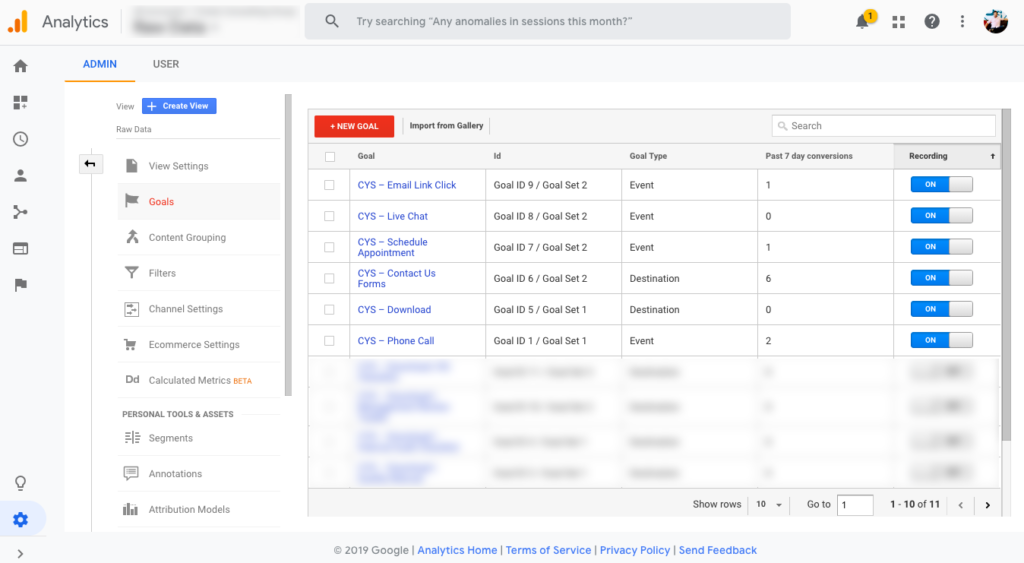
Use Call Tracking
It’s no surprise that we love call tracking. For most lead generation websites, phone calls represent the majority of conversions. Because of this it’s imperative that calls are tracked and attributed back to the marketing channel that generated them.
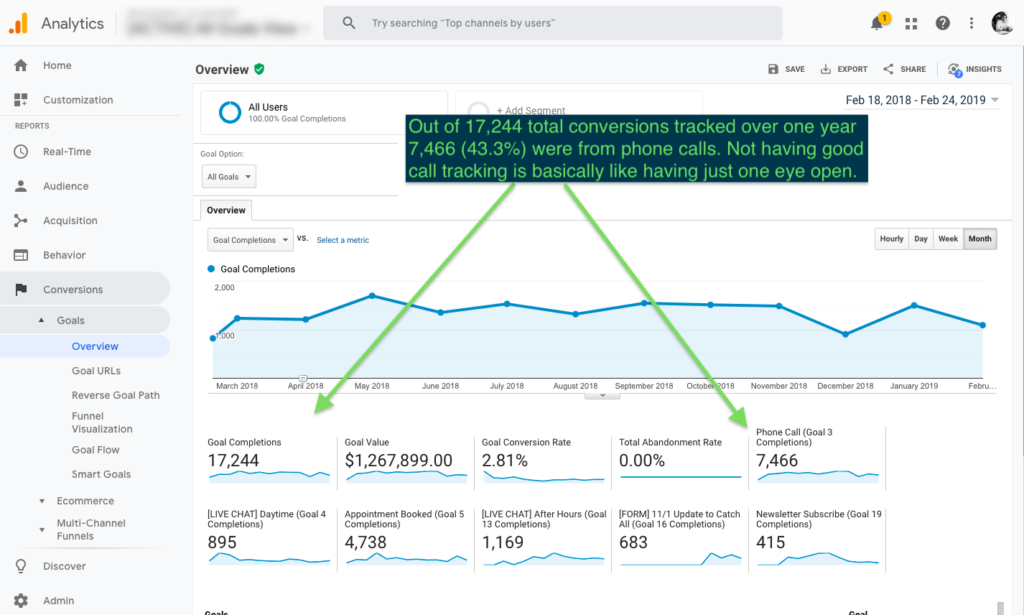
Claim Your Space is all about CallTrackingMetrics for this part of the puzzle for many reasons, but here are two that really stand out:
#1 We Love Seeing Campaign, Keyword and Landing Page Data in the Call Log



#2 We Can Get an Actual Conversion Event Back Into Google Analytics
This one is huge. It requires some effort, but it’s worth it. This is how we get to a measure for cost-per-appointment from Google Ads for one recent project.
CallTrackingMetrics has a field labeled “Conversion” that, when selected, throws a unique event back to Google Analytics labeled “CallSale”.
For the project mentioned above—we worked to have the client’s call center tick that conversion box whenever the call results in a booked appointment.
Voila—Cost-per-Appointment!
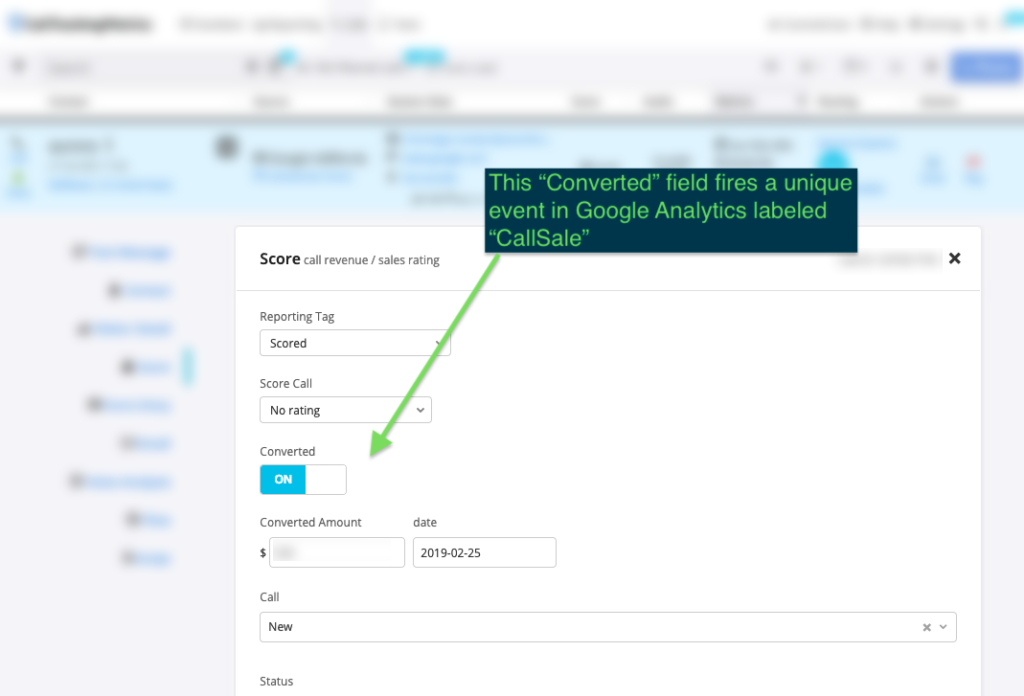
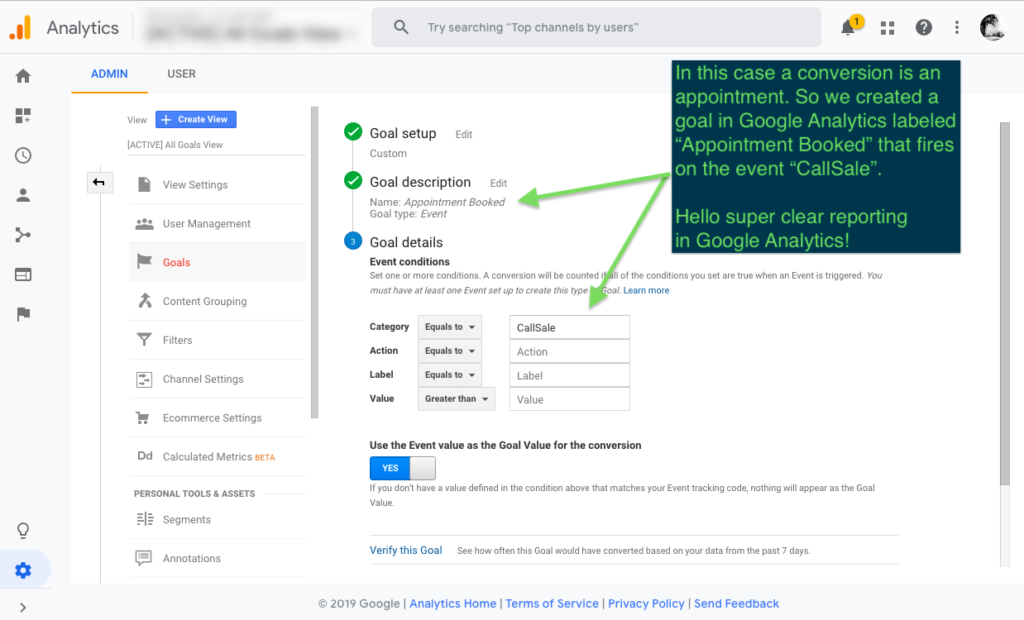
And check this out—easily comparable, shareable data for conversion-rate-to-appointment by marketing channel.
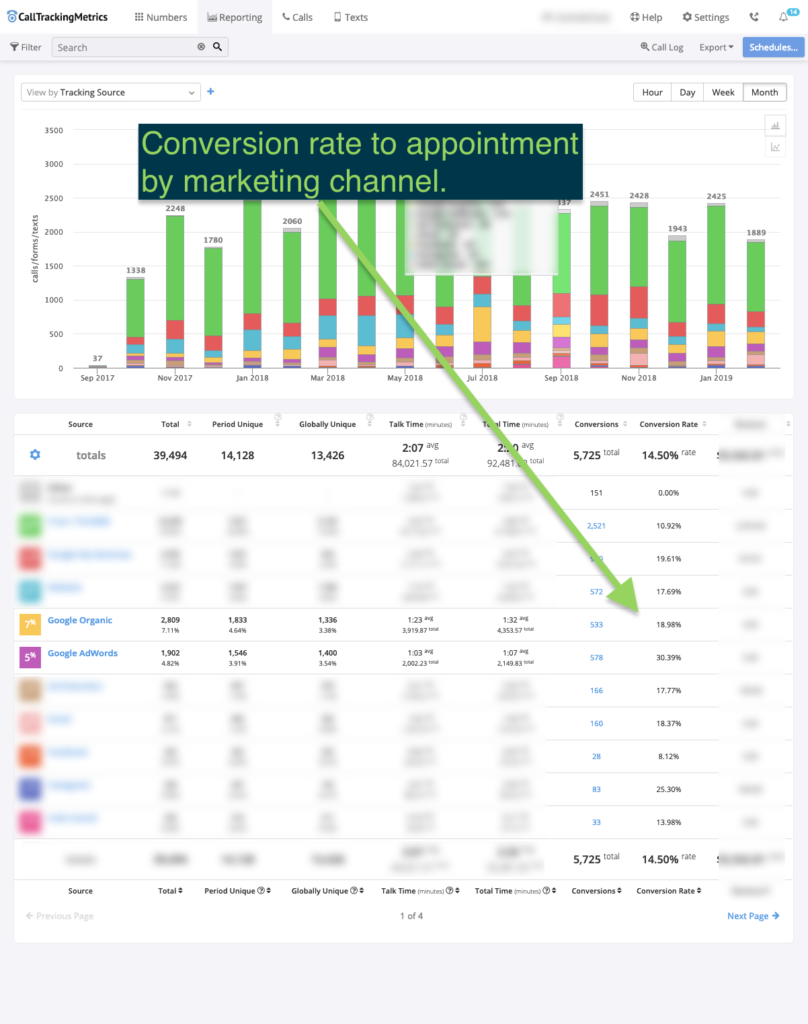
Connect to Your CRM
We love measuring early stage conversions—phone calls and form fills. But with the right systems and bit more effort you can connect the dots between your advertising systems and your financial systems.
Some connections are easy, some more challenging. Here’s an easy one to start with: if you’re using SalesForce just hop on over the newly minted, native connection between SalesForce and Google Ads, and start importing conversions from your lead stages.
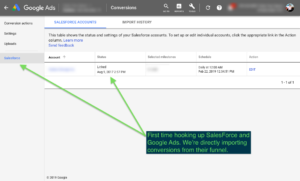
3. Use a System to Track Changes
Intuitive, experienced marketers instinctively notice changes outside of normal for advertising campaigns. But the rest of us need a system. Our team uses a number of tools and processes to manage change in our client’s digital advertising accounts.
Google Ads Campaign Experiments
Using Google Ads Campaign Experiments feature is super fast and easy way to starting testing new ideas in a Google Ads account. Quickly compare performance across any available metrics in your account.
Google Ads Notes
The new Google Ads User Interface also includes a notes editor. It’s a quick and handy way to jot down when a change was made, so you can go back and compare results in the future.
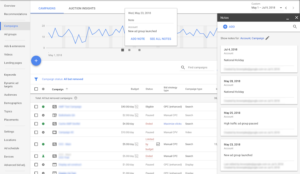
Spreadsheets
Campaign Experiments and Google Ads Notes are both great for Google Ads, but what about when you have multiple marketing channels? I’m not ashamed to say we’re spreadsheet junkies over here. And Google Sheets is perfect for tracking changes across campaigns, channels, and accounts:
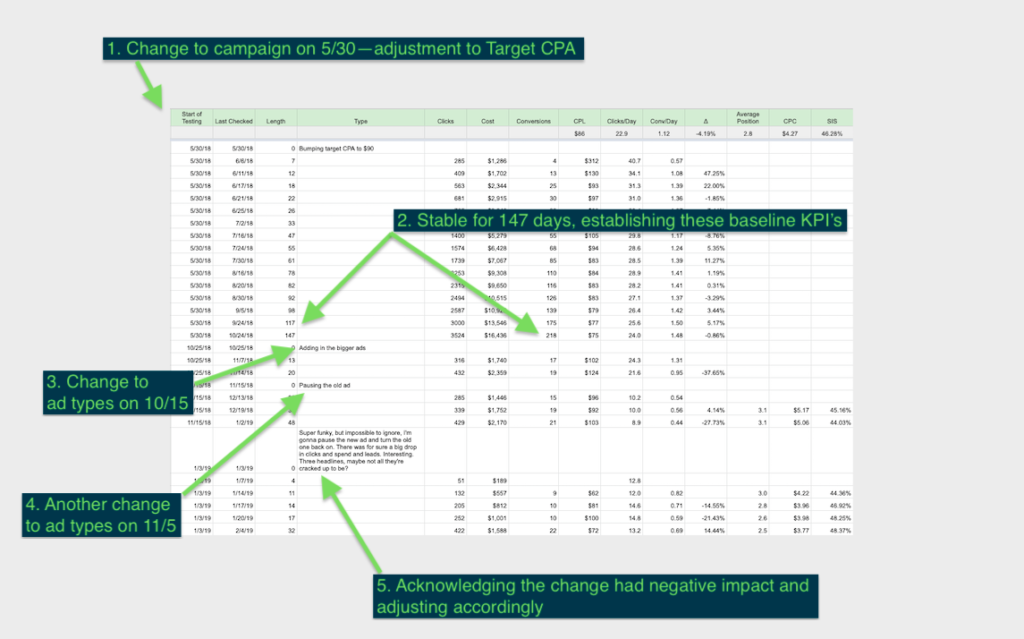
Bonus Tip: Use a tool like SuperMetrics or the Google Ads to Google Sheets add on to automatically pull data from your accounts into a sheet for further analysis.
4. Test New Ad Products for Lead Generation
Now that you have all your killer conversion tracking wired up and a solid system to track changes and tests, it’s time to try some new stuff! Testing new ad products from Google is always high on our priority list. We often find that these products can accelerate performance and visibility for our clients. All the ad platforms are constantly releasing new ads products and features. We recommend looking into the following products from Google Ads:
- Responsive Search Ads
- Responsive Display Ads
- Responsive Display Ads with Video
- Text Message Extensions with Email Forwarding
We’ve seen large increases in impressions and clicks for campaigns using Responsive Search and Display Ads in particular, though the jury is still out on if we can expect notable changes to CTR.
Responsive Display Ads with Video are a totally new ad format, which plays a video in place of a static image in a display ad. They’re showing significant increases in CTR, above and beyond what we’re observing for standard Responsive Display Ads.
Lastly, the Text Message Extension allows a user to send a text message directly from a Google Ad, which can also be set up and customized through CallTrackingMetrics. Before the addition of email forwarding, our clients could only intake these leads via phone. Now we can send the leads directly to an email address, allowing us more flexibility to dovetail into existing CRM’s and sales processes.
Conclusion
Lead generation isn’t getting any easier. But with the right assumptions in the beginning, and the right measurements as you move forward you can absolutely be successful. Digital marketing is an iterative process and the more data you have, the faster you can identify patterns and adjust your course accordingly.
Now go out there and make that phone ring with some killer leads!

Claim Your Space founder Tony Chopp has spent 10+years as a Google Ads Expert, Web Analytics Storyteller, and Digital Marketing Strategist. Specialize in creating high-performing inbound marketing strategies, ad campaigns and lead generation / customer acquisition programs that drive prospect engagement and conversion.
The team at CYS love creating and communicating compelling narratives, threading together performance analytics, ROI and key takeaways for multiple campaigns across multiple digital and social channels. Visit their website to learn more.